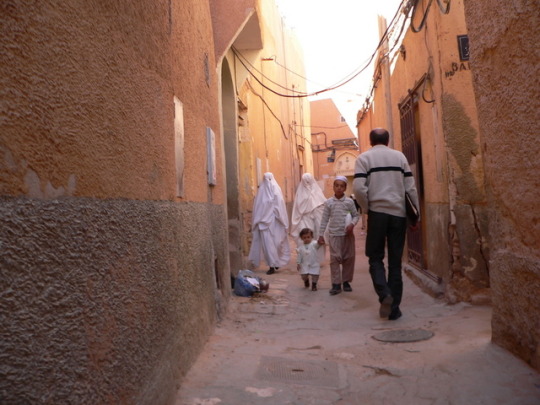#mzab
Explore tagged Tumblr posts
Text

I know the Miku trend is old but I've only caught up to it now and I just had to draw a couple of Mikus from the middle of Algeria (Ouled Nail region, Mzab Region)


#Algeria#hatsune miku#brazilian miku#Algerian Miku#miku fanart#miku in your culture#miku international#vocaloid miku#Ouled Neil#Mzab#Traditional art#Bcz I'm really rusty
94 notes
·
View notes
Text
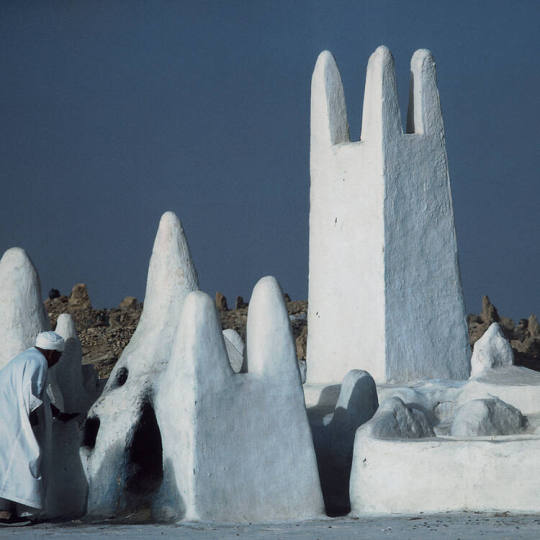
M'Zab Valley
A traditional human habitat, created in the 10th century by the Ibadites around their five ksour (fortified cities), has been preserved intact in the M’Zab valley. Simple, functional and perfectly adapted to the environment, the architecture of M’Zab was designed for community living, while respecting the structure of the family. It is a source of inspiration for today’s urban planners.
Outstanding universal value
Located 600 km south of Algiers, in the heart of the Saharan desert, the five ksour (fortified villages) of the M'Zab Valley form an extraordinary homogeneous ensemble, the mark of a sedentary, urban civilization in the desert, the bearer of an original culture which, through its own genius, has managed to preserve its cohesion over the centuries. Consisting of the ksour and palm groves of El-Atteuf, Bounoura, Melika, Ghardaïa and Béni-Isguen (founded between 1012 and 1350), the M'Zab Valley has retained virtually the same settlement pattern and construction techniques since the 11th century, dictated as much by a specific social and cultural context as by the need to adapt to a hostile environment.
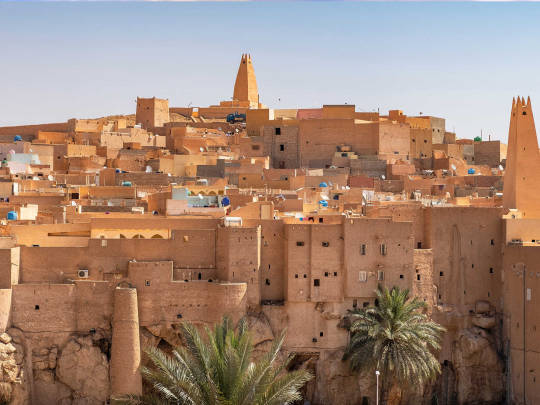
Each of these miniature walled cities is dominated by a mosque whose minaret acts as a watchtower. The mosque was conceived as a fortress, the last bastion of resistance in the event of siege, and included an arsenal and a grain silo. Around this building, essential to community life, are houses arranged in concentric circles up to the rampart. Each house constitutes a fixed cubic cell, illustrating an egalitarian social organization based on respect for the family structure, whose intimacy and autonomy it strives to preserve. At the beginning of the first millennium, the Ibadites used local materials to create a vernacular architecture in the M'Zab that, thanks to its perfect adaptation to the environment and the simplicity of its forms, continues to serve as an example and lesson for contemporary architecture and town planning.
(more)
3 notes
·
View notes
Video
youtube
"Le Mzab : Trésor Berbère du Sahara Algérien"
#youtube#Découvrez l’histoire fascinante du Mzab région berbérophone unique au nord du Sahara algérien. Des origines préhistoriques à l’âge d’or comm
0 notes
Text
Characterization of Two Oasis Luzerns (El Menea, Tamentit) at the Floral Bud and Early Flowering Stages _ Crimson Publishers
Characterization of Two Oasis Luzerns (El Menea, Tamentit) at the Floral Bud and Early Flowering Stages by Alane Farida in Environmental Analysis & Ecology Studies

Abstract Adrar’s oasis with great ingenuity knew, taking into account the harshness of pedoclimatic conditions, to adapt the means of production to Lucerne. We compared 2 oasis alfalfa cultivars through biometric and chemical parameters at two phenological floral and early flowering stages. The quality of these is correlated with the phenological stages. Indeed, the older the plant, the greater the assimilation of mineral matter; But the needs at the floral button stage are higher than at the early bloom stage. The highest value of MAT is 38.7% in El Menea at the floral bud stage and the lowest is 20.8% in the same cultivar at the same stage at the second mowing. The ratio of leaves to stems in green and dry is higher in Tamentit than in El Menea in both stages, resulting in better digestibility. At the initial flowering stage this ratio, in dry, decreases from 1.51 to 1.04. With the same planting rate, the Tamentit population has an average plant per square meter lower than El Menea, ie 15.8 at the floral bud stage, as well as lower values of the other 2 parameters, height of stems and number of stems per square meter. The summer season and the second year of operation encourage the increase in the number of stems and the spring season favors the height of the stems. The difference between the green and dry yields of the two cuts is not significant. So, alfalfa El Menea is more productive than Tamentit which has better digestibility.
For more articles in Environmental Analysis & Ecology Studies Journal,
Please click on below link: https://crimsonpublishers.com/eaes/
#crimson publishers llc#eaes journal#environmental sciences#environmental science & ecology studies#Environmental science & Ecology Studies Open access journal
0 notes
Text
Mzab : Les Sept Merveilles de la Berbérie Algérienne
La vallée du Mzab en Algérie est une pépite du patrimoine berbère, nichée dans les confins sahariens du nord de l’Algérie. Découvrez les sept facettes captivantes de cette région exceptionnelle : Voici 7 choses à connaître sur le Mzab en Algérie Emplacement Stratégique : Située dans la wilaya de Ghardaïa, à une distance de 550 km au sud de la capitale algérienne, Alger, la vallée du Mzab…
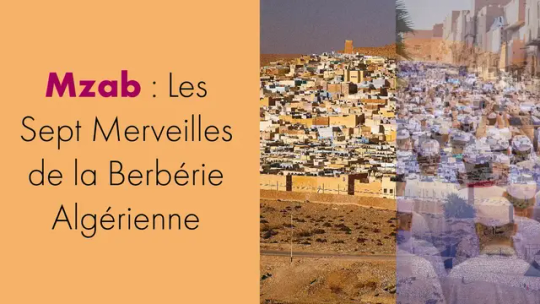
View On WordPress
1 note
·
View note
Text
*doing completely fine voice* yeah so i've just been making spreadsheets for about sixteen hours straight trying to come up with a run that lets me get the maximum goods production possible by starting as aragon for their (essentially) free 6/6/6 ruler and the peasants republic reform + picking up ibadi early off mzab before tag switching into the netherlands and eating england for the two crowns idea set and then hopping over into poland to tf into the plc and then finally swooping down into the balkans for a culture swap in order to grab the vodka reform. its not really totally routed out yet i'm still trying to figure out if there's better routes or if there's another combination of modifiers that ends up yielding a larger end result . no i haven't slept in over a full day why do you ask
mental state update: i have reinstalled europa universalis
#.jtxt#iiiooogig hhwgjmgkjadfghggg vnoka;kvj .#we're gonna go pass out now i thiunk.#oh also i forgot to mention the bit where i have to kill venice but not all the way#bc i need to migrate them to the majorcan islands for the merchant repub goods produced in trade region modifier . oiwougghgiuhgh explodes
12 notes
·
View notes
Photo

Pair of traditional Auresian earrings made of silver, 19th/20th century.
This kind of earrings are generally worn by Naili, Chaoui and Mozabite women.
241 notes
·
View notes
Text
A variety of traditional carpets that reflect the cultural depth of the region. To buy any piece, contact me. Delivery to all the world.
7 notes
·
View notes
Photo
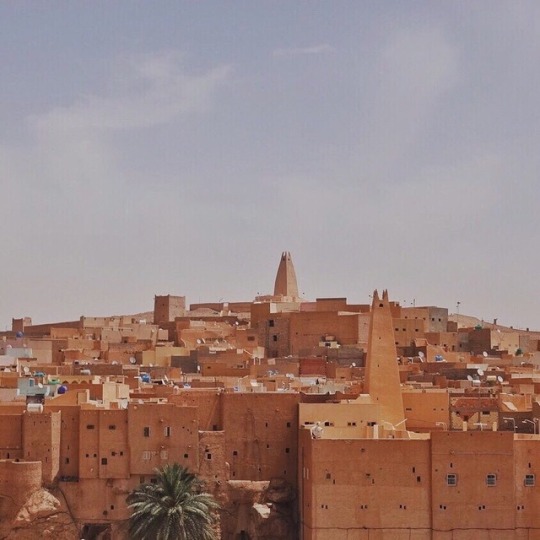
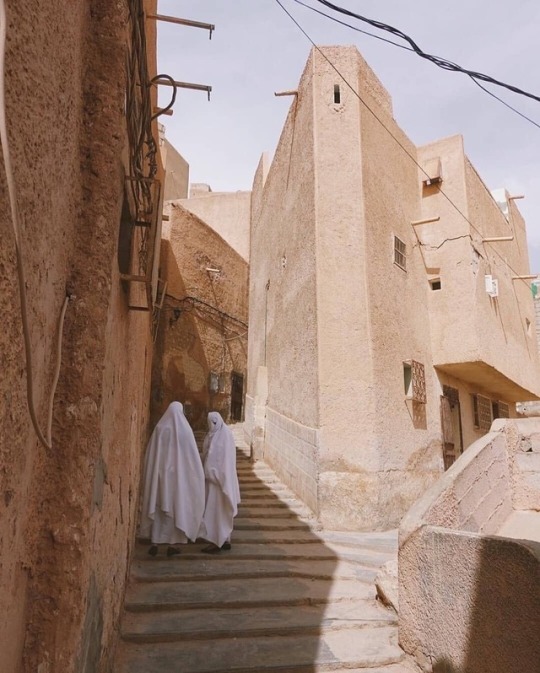
Al Ateuf العطف — Ghardaïa, Algeria 🇩🇿
“The MZab Valley is often seen as the most conservative region in Algeria. Most Mozabite women (from the age of 14/15 year old) are wearing an Ahouli (Hayek or Haïk), basically a large white veil covering their entire body except one single eye. When the girls are not yet married, you can see both of their eyes. A lighter (made out of cotton or poplin) hayek used to be worn in other parts of #Algeria and the Maghreb (Djebel Nafûsa in Libya and Djerba Island in Tunisia), but it has almost totally disappeared. In the #Ghardaia province, nearly every Mozabite woman is wearing a thicker ahouli made out of wool. Beyond religion, Mozabites claim that the ahouli is a distinctive sign of their identity. The permanent separation of the sexes can even be seen in the Mozabite architecture. The houses are designed to prevent contact between the wife and her male in-laws. Codes are instituted to free the passage and avoid any mixed interaction in the same room.”
By @facehunter (Instagram)
192 notes
·
View notes
Photo
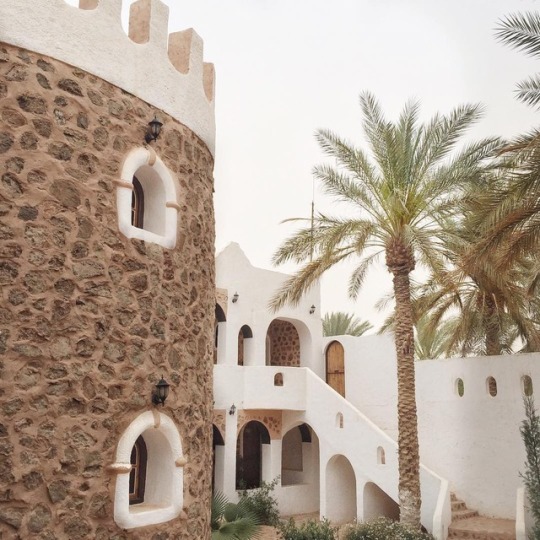
The M'zab Valley, Ghardaïa, Algeria
682 notes
·
View notes
Photo

M’ZAB FLAG
#mzab#mozabite#amazigh#berber#ibadi#ibadism#m'zab#m'zab valley#sahara#algeria#algerian#flag#vexillology
1 note
·
View note
Photo
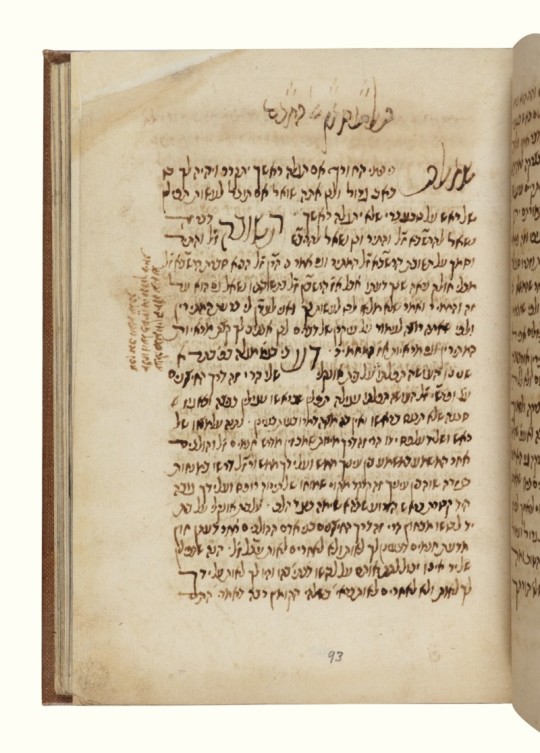
Sefer Nofekh (responsa), Rabbi Abraham ben Jacob ibn Tawwah, Algiers, 16th century
Rabbi Abraham ben Jacob Ibn Tawwah (d. after 1551) was a prominent halakhist, yeshiva dean, preacher, cantor, and liturgical poet of Catalonian extraction based in Algiers. He was a descendant of both the Spanish Rabbi Moses Nahmanides (1194-1270) and the Majorcan-Algerian Rabbi Simeon ben Zemah Duran (1361-1444).
This manuscript, entitled Sefer Nofekh, origninally contained one hundred fifty (the numerical value of the word nofekh spelled without the vav) of his responsa, copied in his hand and, in several cases, signed by him with his distinctive signature: “The most humble descendant of Adam and Eve [Hawwah], Abraham ben Jacob Ibn Tawwah, of blessed memory.” (The manuscript is currently missing thirty-one of the responsa: numbers).
Sefer nofekh not only covers many topics in ritual law but also treats personal status and business law questions. Its pages preserve questions received from Fez in Morocco, Djerba in Tunisia, and several cities and towns in Algeria (Algiers, Tlemcen, Oran, Miliana, Constantine, Médéa, Ouargla/Mzab), especially those that had no local halakhic authority. In his answers, Ibn Tawwah traced the sources of Jewish law from the Talmud to contemporary times, objected to excessive stringency, defended established communal practice, and worked hard to minimize conflicts between members of a community. The book’s essays thus shed much light on the history and socio-religious culture of North African Jewry in the critical period following the expulsions from the Iberian Peninsula and open a window onto Ibn Tawwah’s thought, halakhic methodology, and spiritual leadership.
Ibn Tawwah was a lyrical writer, and many of his responsa include rhymed poetic portions. Toward the end of the volume is a collection of the author’s liturgical poetry, in which he displays great expertise in the principles of traditional Sephardic piyyut.
171 notes
·
View notes
Text
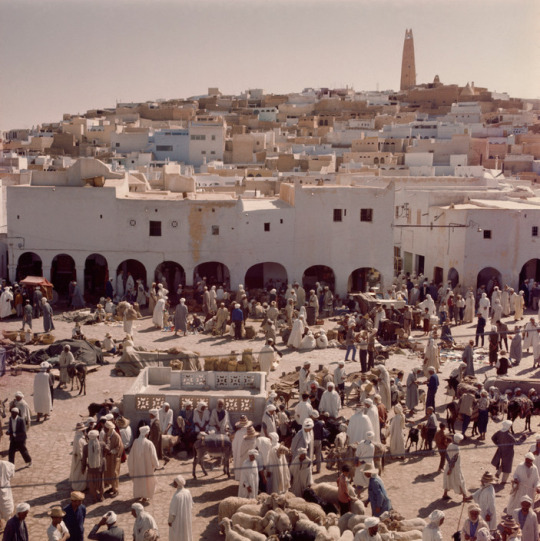
ALGERIA. Mzab. Ghardaïa. 1966. Among the Ibadites. Market day.
6 notes
·
View notes
Photo
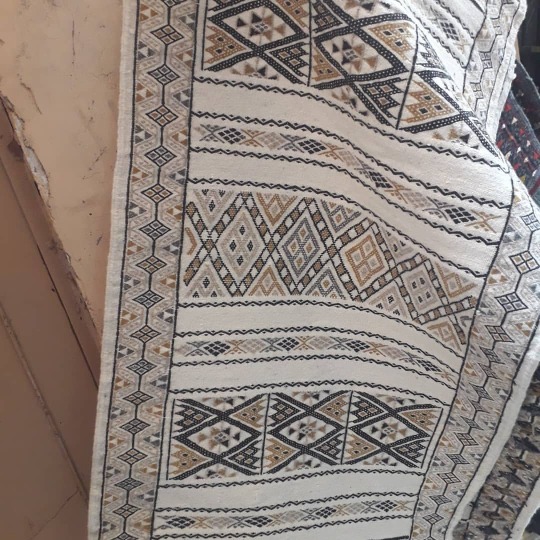
This carpet is a wonderful work of art, it was a way to express the life of women in the ancient Mzab Valley. (à Ghardaïa) https://www.instagram.com/p/CSkqiprtyK9/?utm_medium=tumblr
1 note
·
View note
Text
1.1.1. Berber:
Berber belongs to the Hamitic branch of the Afro-Asiatic language family. It comprises a group of closely related dialects spoken by Berbers, who are the indigenous peoples of North Africa. It is estimated that 20 ‰ of the Algerian population speak it as their mother tongue, as is stated by Oakes:
'' About 20 of the Algerian population speaks Berber as the first language, and many of these do not use Arabic at all, preferring French as their second language ''
Okes (2008:18)
Berber has recently been given the status of an official language in Algeria, after it has remained only a national language since 2002. Berber dialects or varieties are spoken in many parts of Algeria but largely in Kabylia, in the Aures, and some villages in the Sahara. They are different from one another, but they can be mutually intelligible.
They can be classified geographically as follows:
· In the north; “Kabyle” in Algiers , Béjaïa, Tizi Ouzou, Bouïra, Sétif, and Boumerdas.
· The Aures Region; “Chaouia” in Batna, Khenchela, Souk Ahras, Oum el Bouaghi, and Tebessa.
· In the Sahara: “Tamazight” in the Mzab, “Ouargli“ in Ouargla.
1 note
·
View note
